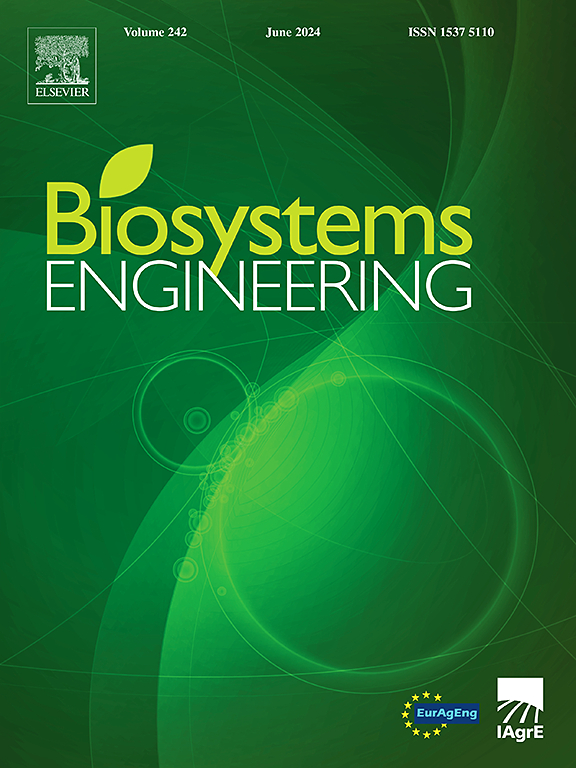A novel collaborative planning framework for artificial forest harvesting and replanting
IF 5.3
1区 农林科学
Q1 AGRICULTURAL ENGINEERING
引用次数: 0
Abstract
Achieving precise and efficient selective harvesting-replanting management in artificial forest quality improvement projects faces significant challenges. Random search algorithms, such as Monte Carlo and simulated annealing, are often used to find near-optimal harvesting plans but are inefficient, costly, and poorly scalable, leading to unstable solutions. Additionally, replanting efficiency post-harvest is low and rule-based. The synergistic effects between harvesting and replanting are often overlooked, limiting the potential for forest structure improvement. To address this issue, this study develops a unified harvesting-replanting collaborative planning framework that integrates the novel monarch-based enhanced genetic algorithm (MEGA), a new Delaunay boundary force algorithm (DF-Boundary), and two multi-objective functions. The framework also incorporates 3D visualisation technology for simulation validation and has been applied to eight mingled plots in southern China. Simulation results show that the diameter distribution of the plots follows an inverted-J shape, with improved species diversity. After selective harvesting, the objective function values () of 8 plots increased by 38.51 %–198.22 %, outperforming other algorithms in performance and stability. Replanting layout reduced the objective function values () of 8 plots by 4.96 %–19.96 %. All spatial structure indicators significantly improved. The results demonstrate that the proposed framework excels in both accuracy and efficiency, enhancing forest structure and moving the forest toward a near-natural state. Further exploration of its application in larger-scale forest ecosystems is needed.
一种新的人工森林采伐与再植协同规划框架
在人工林质量改善工程中,实现精准高效的选择性采伐-再植管理面临着重大挑战。随机搜索算法,如蒙特卡罗和模拟退火,通常用于找到接近最优的收获计划,但效率低、成本高、可扩展性差,导致解决方案不稳定。此外,收获后的再植效率低且有规则可循。采伐和重新种植之间的协同效应往往被忽视,限制了改善森林结构的潜力。为了解决这一问题,本研究开发了一个统一的收获-再植协同规划框架,该框架集成了新的基于君主的增强型遗传算法(MEGA)、新的Delaunay边界力算法(DF-Boundary)和两个多目标函数。该框架还结合了3D可视化技术进行仿真验证,并已应用于中国南方的八个混合地块。模拟结果表明,样地直径呈倒j型分布,物种多样性有所提高。选择性收获后,8个地块的目标函数值(L1∗)增加了38.51% ~ 198.22%,性能和稳定性优于其他算法。8个样地的目标函数值(L2∗)降低了4.96% ~ 19.96%。各空间结构指标明显改善。结果表明,该框架具有较高的精度和效率,能够有效地改善森林结构,使森林向接近自然的状态发展。需要进一步探索其在更大规模森林生态系统中的应用。
本文章由计算机程序翻译,如有差异,请以英文原文为准。
求助全文
约1分钟内获得全文
求助全文
来源期刊

Biosystems Engineering
农林科学-农业工程
CiteScore
10.60
自引率
7.80%
发文量
239
审稿时长
53 days
期刊介绍:
Biosystems Engineering publishes research in engineering and the physical sciences that represent advances in understanding or modelling of the performance of biological systems for sustainable developments in land use and the environment, agriculture and amenity, bioproduction processes and the food chain. The subject matter of the journal reflects the wide range and interdisciplinary nature of research in engineering for biological systems.
 求助内容:
求助内容: 应助结果提醒方式:
应助结果提醒方式:


